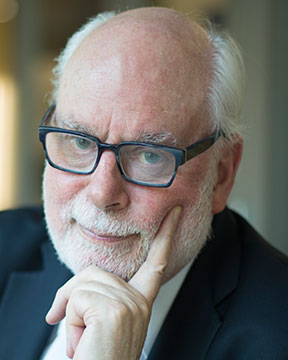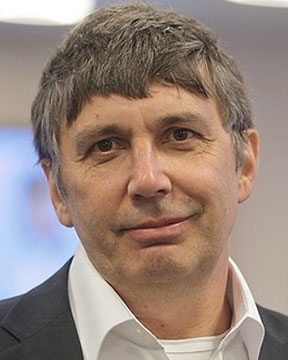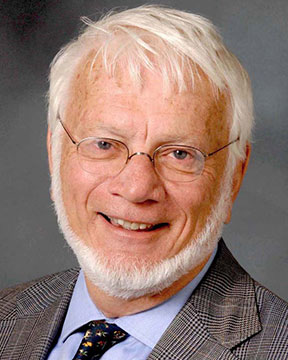ORALS
SESSION: MoltenMonAM-R3
| Fehrmann International Symposium on Sustainable Molten Salt and Ionic Liquid Processing (6th Intl. Symp. on Sustainable Molten Salt and Ionic Liquid Processing) |
| Mon Nov, 5 2018 / Room: Bossa (150/3rd) | |
| Session Chairs: Anders Riisager; Session Monitor: TBA |
11:20: [MoltenMonAM01]
My Life in Molten Ionic Media Rasmus
Fehrmann1 ;
1DTU Chemistry, Lyngby, Denmark;
Paper Id: 56
[Abstract] It was almost 50 years ago, during my study of Chemical Engineering (Civil Engineer) at the Technical University of Denmark (DTU), that I was "baptised" in molten alkali chloroaluminates in the group of Prof. Niels Bjerrum. Since then, I have stayed faithful to molten media for nearly the entirety of my scientific career.
Firstly, my PhD degree (Licentiatus Technices at that time...) concerned unusual oxidation states of the chalcogenes in molten chloroaluminates. Selected experimental results covering rare oxidation states like +1/2, + 1/4 and +1/8 of pure Sulfur, Selenium, and Tellurium species will be highlighted here.
At the end of the 1970's I turned to catalysis in molten salts, with a special focus on the chemistry of the sulfuric acid catalyst, the key material for the production of the most important chemical at the tonnage scale in the world - at that time as well as now. For the following 35 years, more than 60 journal publications and a large number of reports described the efforts of me and my numerous collaborators and students. The most important results will be shown, including the discovery of the complex and compound chemistry Vanadium in molten alkali pyrosulfate melts, and the state-of-the-art reaction mechanism modelling the working sulfuric acid catalyst. In addition, our in-situ and operando investigations of commercial industrial catalysts have been essential to link our ex-situ results to the "real world", and our efforts to achieve the global goal of the catalyst producers - the low temperature sulfuric acid catalyst- allowing more economic and sustainable sulfuric acid production, will also be highlighted.
My educational background as a chemical engineer that focused on organic chemistry during my Master's and on inorganic chemistry during the PhD, combined with my Master thesis on "Hydroformylation by Rh-phosphine Catalysis" (modified Shell Process) was probably essential to me joining the early efforts of research and application of ionic liquids from year 2000. Shortly after, our first results on Supported Ionic Liquid Phase (SILP) continuous flow catalysis were published, regarding Rh-phosphine complexes dissolved in ionic liquids and subsequent impregnated in meso porous inorganic supports. This concept – parallel to the sulfuric acid catalyst also being a Supported Liquid Phase (SLP) catalyst during operation- allowed continuous conversion of gas phase olefins with H<sub>2</sub> and CO to gas phase aldehydes, since no evaporation of solvent or catalyst took place. Thus, an attractive design of the otherwise batch operated Oxo process was provided– a concept that whose commercialization is currently being attempted by, among others, our group and an European industrial partner. Subsequently, we have also applied the SILP concept to other important catalytic industrial processes, like carbonylation of methanol to acetic acid (our patent acquired by an European chemical company), in addition to alkoxycarbonylation of alkenes (important for e.g. MMA production), and also in the Water-Gas-Shift (WGS) process through collaboration with FAU (Erlangen, DE) and the European industry . Selected results of our SILP catalyst research and applications will also be shown at this occasion. In addition, we have recently extended the SILP concept to continuous gas separation and encircled appropriate ionic liquids and porous supports for the selective reversible absorption of gasses like CO<sub>2</sub>, NO<sub>x</sub>, SO<sub>2</sub> and H<sub>2</sub>S. Our fundamental results and the possible application of these selective SILP filters to e.g. CO<sub>2</sub> capture, flue gas cleaning, biogas and natural gas sweetening – pursued industrially together with a Nordic partner – will be described as well.
In conclusion, the importance of the concept "From Molecular Understanding to Industrial Application" – the motto of our research center at DTU (Centre for Catalysis and Sustainable Chemistry) - should be obvious from our achievements so far and undoubtedly also in the future.
References:
[1] Svovls, Selens og Tellurs Kemi i Chloroaluminatsmelter (The Chemistry of Sulfur, Selenium and Tellurium in Chloroaluminate Melts). Rasmus Fehrmann, Thesis, Chemistry Department A, The Technical University of Denmark, Lyngby 1976.
[2] Lower Oxidation States of Selenium. 2. Potentiometric Study Involving Tetravalent Selenium, Tetraselenium(2+), Octaselenium(2+), and Three Other Low Oxidation States of Selenium in a Chloroaluminate Melt. R. Fehrmann and N.J. Bjerrum, Inorg. Chem. 16, 2089, 1977.
[3] Progress on the mechanistic understanding of SO2 oxidation catalysts. O.B. Lapina, B.S. Bala'zhinimaev, S. Boghosian, K.M. Eriksen, and R. Fehrmann, Catal. Today, 51, 469, 1999.
[4] R. Fehrmann, A. Riisager and M. Haumann (Eds.), Supported Ionic Liquids - Fundamentals and Applications, Wiley-VCH, Weinheim, 2014.Applications, Wiley-VCH, Weinheim, 2014.
SESSION: MoltenMonPM2-R3
| Fehrmann International Symposium on Sustainable Molten Salt and Ionic Liquid Processing (6th Intl. Symp. on Sustainable Molten Salt and Ionic Liquid Processing) |
| Mon Nov, 5 2018 / Room: Bossa (150/3rd) | |
| Session Chairs: Tom Welton; Session Monitor: TBA |
16:45: [MoltenMonPM211] Invited
Removal of NO from Gas Streams Using Nitrate-based Ionic Liquids Susanne
Mossin1 ;
Rasmus
Fehrmann1 ; Peter L.
Thomassen
1 ;
1DTU Chemistry, Lyngby, Denmark;
Paper Id: 130
[Abstract] The demand for end-of-pipe deNO<sub>x</sub> technologies has driven the research for activation and conversion of nitric oxide, NO, at low temperatures compared to the traditional selective catalytic reduction of NO with ammonia.
This study describes the progress made in the absorption and catalytic conversion of NO by ionic liquids. Nitrate based ionic liquids such as BMIM (butyl-methyl-imidazolium) nitrate has proven surprisingly efficient for conversion of NO<sub>x</sub> to nitric acid using air as the oxidant.[1,2] The nitric acid is absorbed into the ionic liquid. Desorption can occur in a successive separation step forming commercial grade concentrated nitric acid and a fully regenerated absorber. Using the SILP (Supported Ionic Liquid Phase) technology the ionic liquid is impregnated onto a porous support.
Alternatively, the SILP material can be extruded as monoliths and loaded into a catalyst bed for continuous NO oxidation at low temperature (< 100°C) and high humidity.[3] The technology facilitates the conversion of NO into a mixture of higher oxygenates (NO<sub>2</sub>, HNO<sub>2</sub>, and HNO<sub>3</sub>) for further downstream processing or absorption. Recently[3], we have discovered that small amounts of alcohols injected into the flue gas upstream the SILP material enhances the low temperature oxidation of NO considerably, increasing the effectiveness of the catalyst.
Currently we pursue the invention for gas cleaning application in collaboration with industry.
References:
[1] A. J. Kunov-Kruse, P. L. Thomassen, A. Riisager, S. Mossin, R. Fehrmann Chem. Eur. J. 2016, 22, 11745-11755.
[2] P. K. Kaas-Larsen, P. L. Thomassen, L. Schill, S. Mossin, A. Riisager, R. Fehrmann ECS Trans. 2016, 75, 3-16.
[3] P. W. Jakobsen, S. Mossin, R. Fehrmann In preparation
SESSION: MoltenTuePM1-R3
| Fehrmann International Symposium on Sustainable Molten Salt and Ionic Liquid Processing (6th Intl. Symp. on Sustainable Molten Salt and Ionic Liquid Processing) |
| Tue Nov, 6 2018 / Room: Bossa (150/3rd) | |
| Session Chairs: Anja-Verena Mudring; Session Monitor: TBA |
14:00: [MoltenTuePM105]
Upgrading of Biogas Using Supported Ionic Liquid Phase (SILP) Materials Leonard
Schill1 ; Frederik
Bork Jansen
1 ; Christian
Weibel
1 ;
Anders
Riisager2 ;
Rasmus
Fehrmann1 ;
1DTU Chemistry, Lyngby, Denmark;
2DTU Chemistry, Kgs. Lyngby, Denmark;
Paper Id: 72
[Abstract] Upgrading of biogas requires the removal of both CO<sub>2</sub> and H<sub>2</sub>S. Amino Acid based ionic liquids (AA-ILs) are known to efficiently remove CO2 by binding to the carboxylate group and DFT studies suggest that H<sub>2</sub>S can bind to both the carboxylate and the amine group of the amino acid anion. This study has demonstrated that that indeed two moles of H<sub>2</sub>S can bind to one mole of [P4444][Pro] even when a highly dilute stream (750 ppm) is used. Adsorption to the stronger sites (amine groups) is possible even in the presence of a vast excess of CO<sub>2</sub>. There is reason to believe that H<sub>2</sub>S removal levels of > 90 % could be maintained for several days at a space velocity of 100 h-1 with an H<sub>2</sub>S inlet concentration of 750 ppm. Potential pressure drop problems were solved by impregnating the ionic liquid onto mesoporous pellets prepared by a simple and scalable technique. H<sub>2</sub>S removal under relatively mild conditions (60 °C, 50 mbar) was unsuccessful and raises concerns about the ability to regenerate [P4444][Pro]. This might also mean that pure CO<sub>2</sub> removal using [P4444][Pro] requires gas streams practically free of H<sub>2</sub>S.
References:
[1] Angelidaki, I.; Treu, L.; Tsapekos, P.; Luo, G.; Campanaro, S.; Wenzel, H.; Kougias, P. G. Biogas upgrading and utilization: Current status and perspectives. Biotechnology Advances 2018, 36, 452-466, doi:10.1016/j.biotechadv.2018.01.011.
[2] Strauch, S.; Krassowski, J.; Singhal, A. Biomethane Guide for Decision Makers Policy - guide on biogas injection into the natural gas grid. Frauenhaofer UMSICHT, Research group biogas technology 2013. http://www.greengasgrids.eu/fileadmin/greengas/media/Downloads/Documentation_from_the_GreenGasGrids_project/Biomethane_Guide_for_Decision_Makers.pdf
[3] Liu, S.; Zhou, H.; Song, Q.; Ma, Z. Journal of the Taiwan Institute of Chemical Engineers Synthesis of higher alcohols from CO 2 hydrogenation over Mo-Co-K sulfide-based catalysts. 2017, 76, 18-26, doi:10.1016/j.jtice.2017.04.007.
[4] Kaas-Larsen, P. K.; Thomassen, P.; Schill, L.; Mossin, S.; Riisager, A.; Fehrmann, R. Selective Reversible Absorption of the Industrial Off-Gas Components CO 2 and NO. ECS Trans. 2016, 75, 3-16, doi:10.1149/07515.0003ecst.
[5] Jansen, F. B.; Weibel, C. Selective absorption of gases by ionic liquids. Bachelor Thesis, Technical University of Denmark, Kgs. Lyngby, Denmark 2017.



















